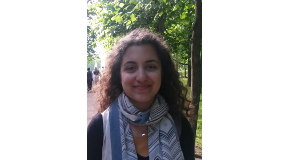
SENA KAYASÜ (ARCH/IV)
sena.kayasu@ug.bilkent.edu.tr
- S. Eliot said, “And the end of all our exploring will be to arrive where we started and know the place for the first time.” How right could a man be?
Humans began to live in some form of a city centuries ago. After the Industrial Revolution, urban life became a whole different monster. It came to be centered around huge factories and the profits obtained from them more than around the people who worked in them. And with new materials that were discovered, cities outgrew the human scale and reached a mechanical scale. Ever since then, we’ve been trying to figure out how to get our urban habitat right.
There were a lot of good ideas thrown around. But the artificially planned cities never managed to work in the way that the old urban centers in places like Prague did. Of course, Prague’s Old Town did not envision modern transportation or sewage systems. It worked because it prioritized people. It had nothing else to go on. Nowadays, architecture has many concerns, from transportation and congestion to drainage and sewage. Architects and designers have become so worried about modern requirements that they forgot about the very people who will occupy their buildings.
We are now trying to remember ourselves. This happens once in a while. When innovation begins to get ahead of itself, there may spring up a trend to go back to our roots. It happened in the 19th century with the Arts and Crafts movement that prized handcrafted production, and then with the English gardens that rich people expensively and extensively designed to look wild and untouched.
The current movement to remember ourselves and revitalize the city really started to gain speed in the 1970s, when a journalist named Jane Jacobs gave people a wake-up call. This movement is called “New Urbanism.” Its aim is to let people walk on the street and kids play outside.
How do we achieve this? We make the streets better. Instead of constructing large malls, we put small shops underneath apartments. Instead of creating isolated office plazas that become scary hunting grounds at night, we integrate businesses with functions that are active around the clock. This helps with congestion and parking issues as well as safety, since people come, go and park at different hours. It helps businesses because they make more sales with more people out on the streets. It helps the residents because they can work close to where they live.
If they can’t work where they live, or they have to go somewhere else for some other reason (as we all do sometimes, thank goodness), they should be able to use public transport. Take Ankara, for example. We technically have buses and a subway. But no one likes to take them, as they usually take two to three times longer than it would to drive. Public transport is obviously going to take longer than a private car, but it is not preferable when it puts its users at so great a disadvantage. But cars are bad! So we need to make public transport attractive. New Urbanism calls this Transit-Oriented Development (TOD).
Creating walkable neighborhoods and designing amenities that are accessible via shared transport is not only good for the people, it’s good for the city. One thing is that there are fewer cars. Another is that there is compact growth, which is the opposite of sprawl. And sprawl is basically Ümitköy.
A big city gets big. It gets a lot of schools, hospitals and job opportunities. It also gets a lot of well-off people who want to live in it. So land values increase. Property taxes go up. It costs more to build. Then a genius developer thinks, “Oh, I’ll construct a few apartments and a supermarket somewhere a little out of the way where land doesn’t cost so much.” He does. When other developers realize how smart he is, they start doing the same thing. They don’t have to pay for the new infrastructure, and most people have cars. So the apartments all get sold. As more developers become interested, the gap between the city and those few apartments fills up, and the city suddenly has an entirely new district that needs new infrastructure (roads, water mains, electricity) and attracts more attention (as well as money). Valuable land in the city center is abandoned and falls into disuse. Who wants to pay all that money when they can buy cheap lots in Ümitköy?
This is not good. It is a waste of resources when we still have perfectly good land available in the city center. The government could help pay for that instead of new roads. There would be fewer cars, less gas used and more walkability. Cities are a problem as much as a blessing, and the last thing we need right now is to make that problem bigger.
We’re going back to where we started, even as technology is progressing to a point we could not have imagined 10 years ago. We want to walk to places. We want to let shop owners make money in their neighborhood. We want kids to play out on the street, and we want their parents to be able to keep keep an eye on them from home. We want a variety of residents and jobs for all of them. We want safer streets and less policing.
No doubt this trend will die down and give way to something else, something more extreme. But for now, movements like New Urbanism give us the chance to restore an element of balance to the world.
